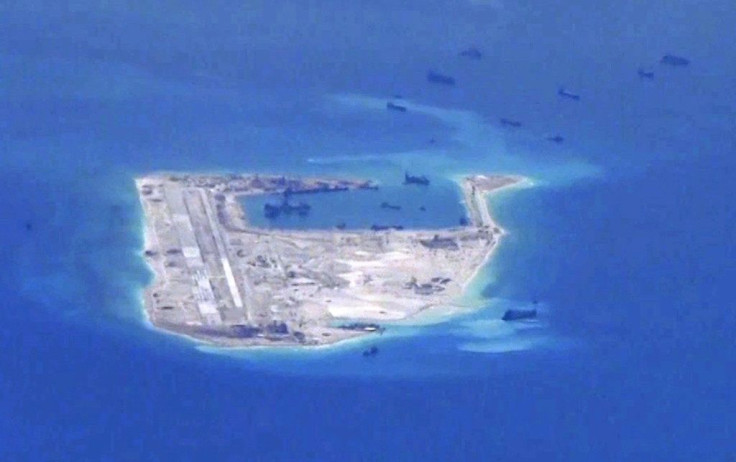South China Sea Controversy: Beijing Built Tennis And Basketball Courts On Spratlys, New Satellite Images Show

As a territorial dispute continues in the South China Sea, new satellite imagery has surfaced showing that China built sports facilities on its artificial islands in the Spratly archipelago, Time reported Sunday. Beijing has faced constant criticism over its assertive nature in the disputed area.
Chinese engineers have constructed sports utilities such as tennis and basketball courts, and running tracks on Fiery Cross Reef and Mischief Reef of the Spratlys, Time reported, citing satellite images from DigitalGlobe. The pictures were captured on May 1.
The South China Sea region has been long contested, with Beijing laying claims to most of it. Brunei, Malaysia, the Philippines, Taiwan and Vietnam also have conflicting claims to the waters, through which over $5 trillion of maritime trade passes annually. However, China has consistently defended its actions, saying it does not have any intentions of starting a conflict and that its operations will add to the safety of the region.
Earlier this month, the Pentagon released a report detailing Beijing’s military buildup in the contested area. The report said that China has been rapidly building military outposts on contested islands in the South China Sea. Beijing has added over 3,200 acres in the last two years to the seven sites it occupies in the region, the Pentagon said.
The U.S. Navy has also been sending ships to the South China Sea under freedom of navigation patrols, angering Beijing. Last month, American aircraft carrier USS John C. Stennis returned for patrol in the South China Sea.
Last Monday, Gen. Robert Neller, a senior U.S. Marine Corps officer said that the U.S. will continue to carry out operations in the disputed South China Sea, including freedom of navigation patrols. Neller also said that the U.S. would continue supporting international law and build trust with the countries in the Asia-Pacific region. He noted that “certain nations” were promoting their interests in the South China Sea by pushing boundaries but avoiding starting a conflict.
© Copyright IBTimes 2025. All rights reserved.






















